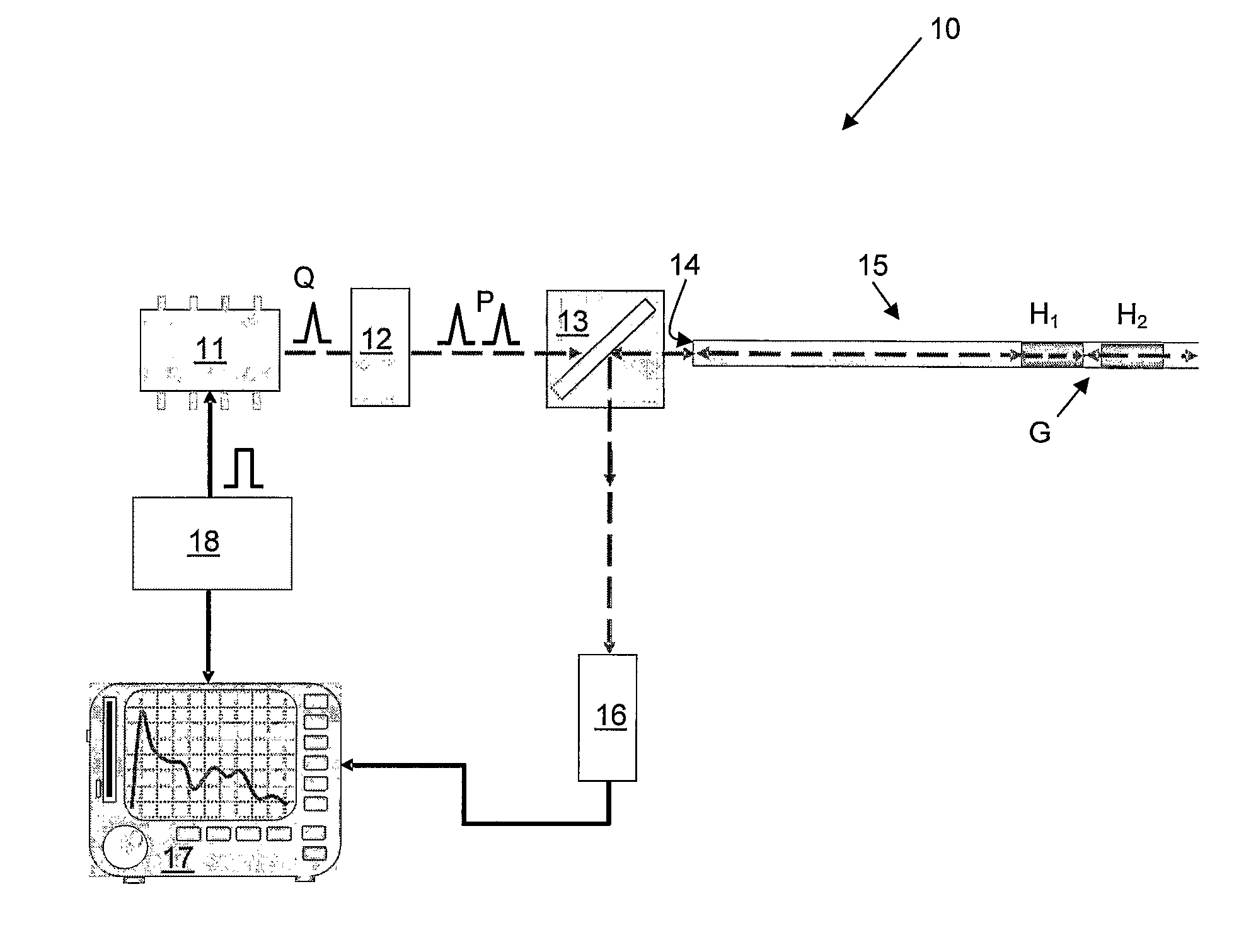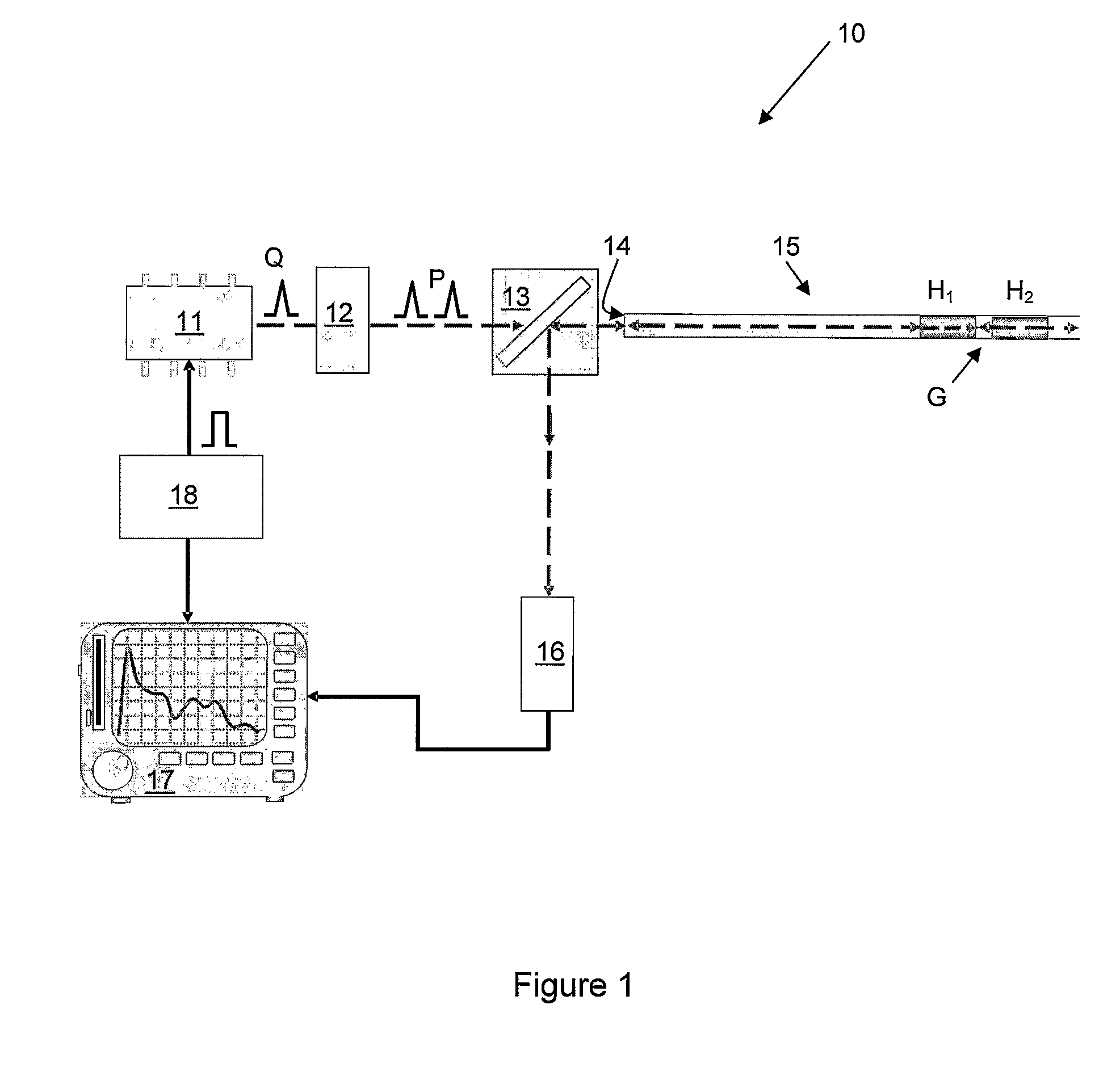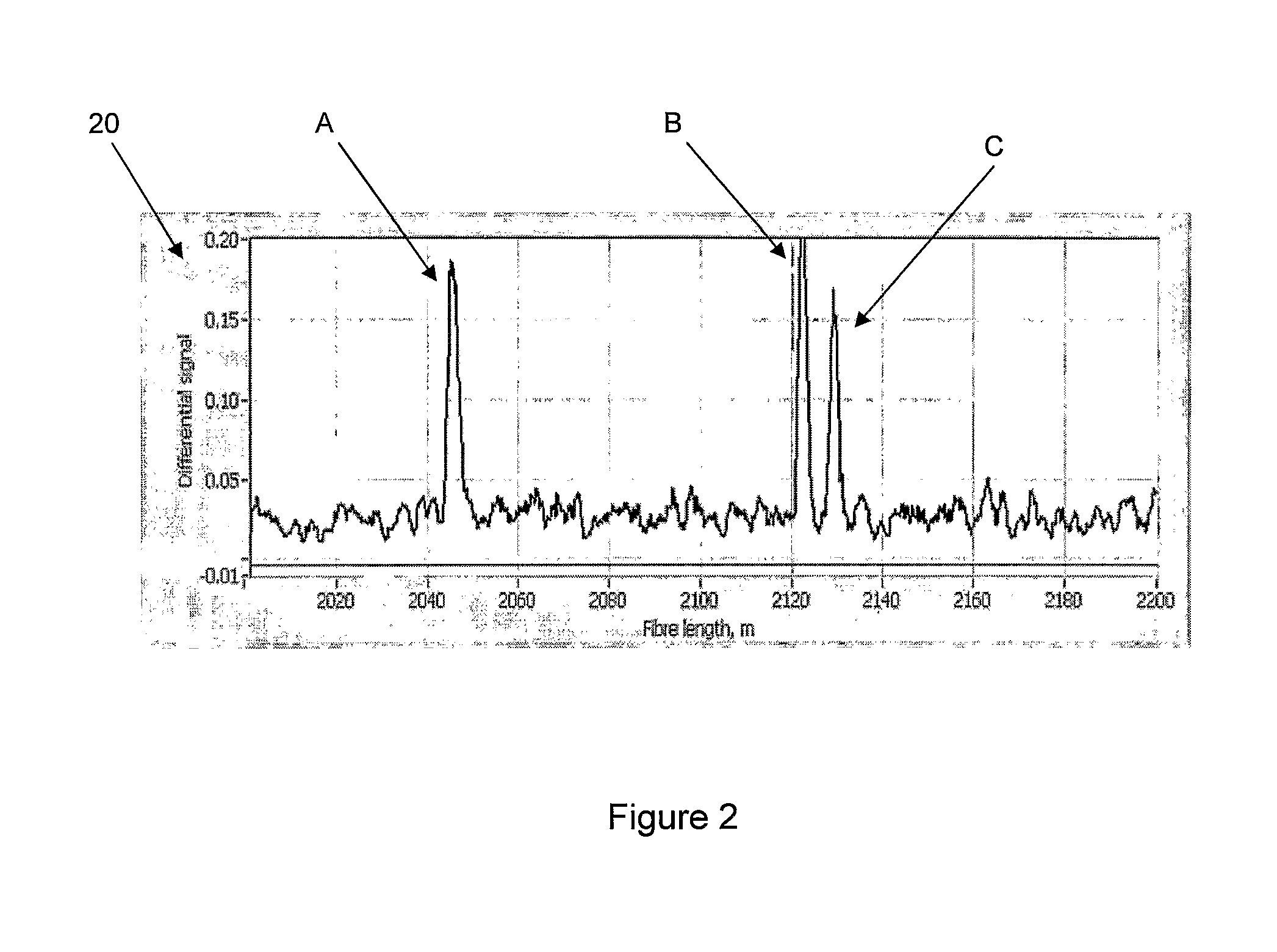Detecting a disturbance in the propagation of light in an optical waveguide
a technology of optical waveguide and propagation mode, which is applied in the direction of optical apparatus testing, structural/machine measurement, instruments, etc., can solve the problems of interfering with the overall intensity of backscattered light, and achieve the effect of accurately detecting disturbances, accurate resolution, and effective detection of disturbances
- Summary
- Abstract
- Description
- Claims
- Application Information
AI Technical Summary
Benefits of technology
Problems solved by technology
Method used
Image
Examples
Embodiment Construction
[0031]Referring to FIG. 1, an optical time domain reflectometry apparatus 10 has a laser 11 for producing light Q. The laser 11 is arranged to output the light Q it produces to a light modulator 12 for modulating the light Q to produce light pulses P. The light pulses P produced by the light modulator 12 each have two sections H1, H2 of higher intensity separated by a gap G of lower intensity. Indeed, in this embodiment, the gap G of lower intensity has substantially zero intensity and each of the sections H1, H2 of higher intensity are effectively individual pulses of light, except that they are substantially mutually coherent, as described below in more detail. The light modulator 12 is adapted to vary the duration of the gap G of lower intensity of the light pulses to vary the resolution of the apparatus 10. A smaller gap G can provide increased resolution. In another embodiment, the light modulator 12 provides a first of the two sections H1, H2 of higher intensity and the second...
PUM
| Property | Measurement | Unit |
|---|---|---|
| distances | aaaaa | aaaaa |
| distances | aaaaa | aaaaa |
| distances | aaaaa | aaaaa |
Abstract
Description
Claims
Application Information
 Login to View More
Login to View More - R&D
- Intellectual Property
- Life Sciences
- Materials
- Tech Scout
- Unparalleled Data Quality
- Higher Quality Content
- 60% Fewer Hallucinations
Browse by: Latest US Patents, China's latest patents, Technical Efficacy Thesaurus, Application Domain, Technology Topic, Popular Technical Reports.
© 2025 PatSnap. All rights reserved.Legal|Privacy policy|Modern Slavery Act Transparency Statement|Sitemap|About US| Contact US: help@patsnap.com



